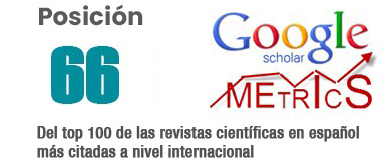Evaluation food attractants and traps to catching fruit flies (Diptera: Tephritidae) on orange (Citrus sinensis (l.) Osbeck) in Tepalcingo, Morelos, Mexico
DOI:
https://doi.org/10.62452/nb58ry98Keywords:
Attractants, Anastrepha, citrus, traps, fruit fliesAbstract
The study aim was to determine the most suitable trap-attractant combination for monitoring of Anastrepha complex in this fruit tree. The trial was carried out in a commercial orange orchard, variety "Valencia" variety, in Morelos state, during two periods (October-November / 2020 and (January-February / 2021), a total 12 weeks. Eight treatments were used, with two combinations (traps-attractants), plus two controls. The number of adults captured and the proportion by sex of females: males / treatments and the species present were analyzed. As results, three species of Anastrepha were identified: A. ludens, A. obliqua, A. striata, reporting as more abundant to A. ludens. Females had a higher prevalence than males, being A. ludens, that showed the highest proportion, (3:1) and (1.8:1) in both periods. While, in A. obliqua, it was the reverse (1:2) in first period and (0,69:1) in second period. The best trap-attractant combination corresponded to (PET-Cera Trap®) and (Multilure®-Cera Trap®) treatment, which reached the highest number of trapped flies and highest index (MTD), with 0,2292 and 0,2024 respectively. The climatic variables analyzed, mean temperature had a positive correlation on the insect species in both periods, with a greater influence on A. ludens, which showed better adaptation to the local conditions in orange crop.
Downloads
References
Cotoc-Roldán, E. M., Vela-Luch, W. C., Estrada-Marroquín, C., & Hernández-Pérez, R. (2021). Evaluación de trampas para el seguimiento de Ceratitis capitata (Wiedemann, 1824) (Diptera: Tephritidae) en el cultivo del café en Acatenango, Guatemala. Revista Chilena de Entomología, 47, 147-156.
Díaz-Fleischer, F., Arrendo, J., Flores, S., Montoya, P., & Aluja, M. (2009). There Is No Magic Fruit Fly Trap Multiple Biological Factors Influence the Response of Adult Anastrepha ludens and Anastrepha obliqua (Diptero Tephritidae) Individuals to Multilure Traps Baited With Biolure o NuLure. Journal of Economic Entomology, 102(1), 86-94.
Dupuis, J. R., Ruiz-Arce, R., Barr, N. B., Thomas, D. B., & Geib, S. M. (2019). Range-wide population genomics of the Mexican fruit fly: Toward development of pathway analysis tools. Evolutionary Applications, 12(8), 1641–1660.
Flores, S., Gómez, E., Campos, S., Gálvez, F., Toledo, J., Liedo, P., Pereira, R., & Montoya, P. (2017). Evaluation of mass trapping and bait stations to control Anastrepha (Diptera: Tephritidae) fruit flies in mango orchards of Chiapas, Mexico. Florida Entomologist, 100(2), 358-365.
Food and Agriculture Organization of the United Nations. (2012). Simposio Regional Sobre Manejo de Moscas Fruteras en los Países del Medio Oriente. FAO. http://www.fao.org/agriculture/crops/noticias-eventos-boletines/detail/es/item/153696/icode/2/?no_cache=1
Food and Agriculture Organization of the United Nations. (2019). (En línea) Fecha de acceso: 1-mayo-2021. FAO. http://www.fao.org/faostat/es/#data/QC
Fronfría, M. A. (2003). Citricultura. Ediciones Mundi-Prensa Libros.
Hernández Arredondo, J. D. (2014). Crecimiento y producción de naranja cv. Valencia Citrus sinensis (L.) Osbeck, como respuesta a la aplicación de correctivos y fertilizante. Universidad Nacional de Colombia.
Hernández-Ortiz, V., Guillén-Aguilar, J., & López, L. (2010). Taxonomía e identificación de moscas de la fruta de importancia económica en América. Moscas de la fruta: fundamentos y procedimientos para su manejo. S y G Editores.
Lasa, R., & Cruz, A. (2014). Efficacy of new commercial traps and the lure Ceratrap® against Anastrepha obliqua (Diptera: Tephritidae). The Florida Entomologist, 97(4), 1369-1377.
Martínez-Morales, A., Alia-Tejacal, I., & Hernández-Hernández, U. L. (2003). Fluctuación poblacional de moscas de la fruta, género Anastrepha (Diptera: Tephritidae), en una huerta de zapote mamey en Jalpa de Méndez, Tabasco, México. Centro Agrícola, 30(4), 54-59.
México. Secretaría de Agricultura, Ganadería y Desarrollo Rural. (1999). (Norma Oficial Mexicana Fitosanitaria. Campaña Nacional contra Moscas de la Fruta. (NOM-023-FITO-1995). Publicado en e Diario Oficial de la Federación. http://legismex.mty.itesm.mx/normas/fito/fito023.pdf
México. Servicio de Información Agroalimentaria y Pesquera. (2018). Estadísticas. SIAP. http://infosiap.siap.gob.mx:8080/agricola_siap_gobmx/AvanceNacionalCultivo.do
México. Servicio de Información Agroalimentaria y Pesquera. (2019). Producción Agrícola. https://www.gob.mx/siap/acciones-y-programas/produccion-agricola-33119
México. Servicio Nacional de Sanidad, Inocuidad y Calidad Agroalimentaria. (2017). Programa MOSCAMED. Manual de Procedimientos para el Sistema de Detección por Trampeo de la Mosca del Mediterráneo C. capitata (Wied) en Guatemala, Chiapas y Sur de Tabasco. Diario Oficial.
Sequeira, R., Millar, L., & Bartels, D. (2001). Identification of Susceptible Areas for the Establishment of Anastrepha spp. Fruit Flies in the United States and Analysis of Selected Pathways. Raleigh, NC USDA-APHISPPQ Cent Plant Heal Sci Technol, 47.
Solana, A., Contreras-Navarro, Y., & Pérez-Staples, D. (2016). Female age determines remating behavior in wild Mexican fruit flies. Journal of Insect Behavior, 29, 340-354.
Stupp, P., Machota, R., Cardoso, T. D. N., Costa Padilha, A., Hoffer, A., Bernardi, D., & Botton, M. (2020). Mass trapping is a viable alternative to insecticides for management of Anastrepha fraterculus (Diptera: Tephritidae) in apple orchards in Brazil. Crop Protection, 139.
Tucuch-Cauich, F. M., Chi-Que, G., & Orona-Castro, F. (2008). Dinámica poblacional de adultos de la mosca mexicana de la fruta Anastrepha sp. (Diptera: Tephritidae) en Campeche, México. Agricultura Técnica en México, 34(3), 341-347.
Vanoye-Eligio, V., Pérez-Castañeda, R., Gaona-García, G., Lara-Villalón, M., & Barrientos-Lozano, B. (2015). Fluctuación poblacional de Anastrepha ludens en la región de Santa Engracia, Tamaulipas, México. Revista Mexicana de Ciencias Agrícolas, 6(5), 1077-1091.
Downloads
Published
Issue
Section
License
Copyright (c) 2021 Rosmery Hernández López, Víctor López Martínez, Porfirio Juárez López, Irán Alia Tejacal, Dagoberto Guillén Sánchez, Ricardo Hernández Pérez (Autor/a)

This work is licensed under a Creative Commons Attribution-NonCommercial-ShareAlike 4.0 International License.
Authors who publish in Revista Metropolitana de Ciencias Aplicadas (REMCA), agree to the following terms:
1. Copyright
Authors retain unrestricted copyright to their work. Authors grant the journal the right of first publication. To this end, they assign the journal non-exclusive exploitation rights (reproduction, distribution, public communication, and transformation). Authors may enter into additional agreements for the non-exclusive distribution of the version of the work published in the journal, provided that acknowledgment of its initial publication in this journal is given.
© The authors.
2. License
The articles are published in the journal under the Creative Commons Attribution-NonCommercial-ShareAlike 4.0 International License (CC BY-NC-SA 4.0). The terms can be found at: https://creativecommons.org/licenses/by-nc-sa/4.0/deed.en
This license allows:
- Sharing: Copying and redistributing the material in any medium or format.
- Adapting: Remixing, transforming, and building upon the material.
Under the following terms:
- Attribution: You must give appropriate credit, provide a link to the license, and indicate if any changes were made. You may do this in any reasonable manner, but not in any way that suggests the licensor endorses or sponsors your use.
- NonCommercial: You may not use the material for commercial purposes.
- ShareAlike: If you remix, transform, or build upon the material, you must distribute your creation under the same license as the original work.
There are no additional restrictions. You may not apply legal terms or technological measures that legally restrict others from doing anything the license permits.




